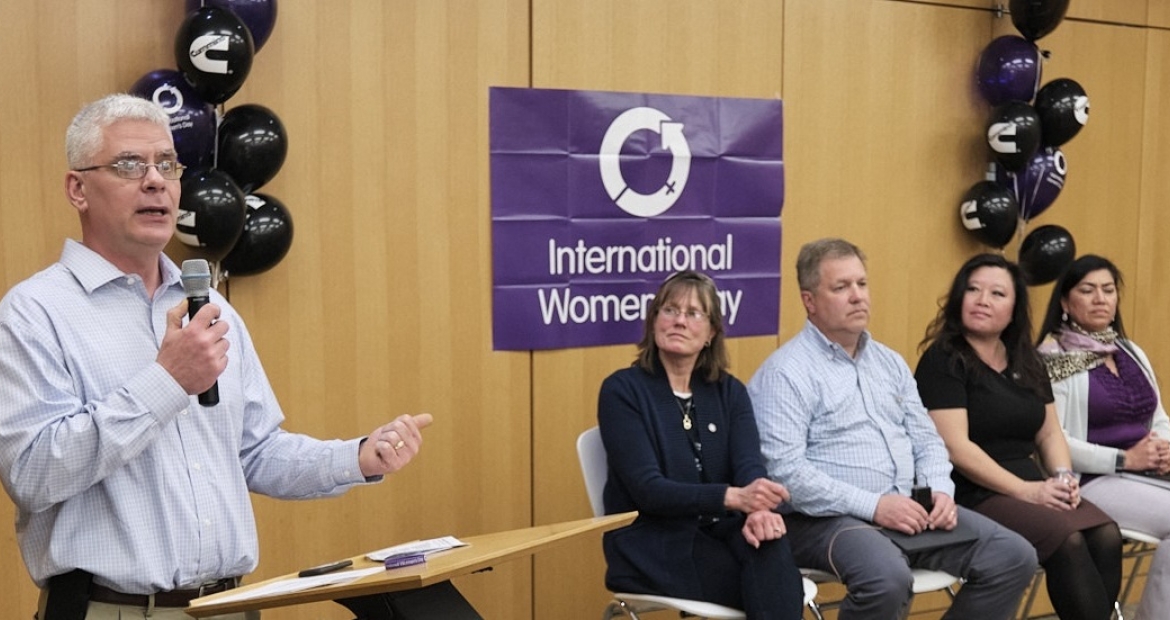He likes to look back as he looks forward to a carbon-neutral future
When Cummins Vice President and Chief Technical Officer Jim Fier thinks about the company’s aspiration to be carbon neutral by 2050, he says he likes to look back.

That might sound odd, but Fier told participants at last week’s virtual Work Truck Week 2021 (March 8-12), a celebration of the commercial truck industry, that he finds inspiration looking back as he looks forward to the challenge in achieving the carbon-neutral future envisioned in PLANET 2050, Cummins’ environmental sustainability strategy.
"You're probably saying, 'Why are you looking at the plan and you're pointing me to the past?'," Fier said, referring to PLANET 2050. "What gives me confidence that we're actually going to be able to get there is looking in the rear-view mirror and seeing the innovation that has occurred over the last 30 years to get us to where we're at today."
Thirty years ago, diesel engine makers began what would be a remarkable success story. Working to meet increasingly tougher standards set by government regulators, the industry steadily reduced oxides of nitrogen (NOx) and particulate matter (PM) emissions, two key contributors to smog. Today, the industry's NOx emissions are down more than 90% compared to the mid-1980s and early 1990s and PM has been reduced more than 95%.
INTERESTING PARALLELS
There are some interesting parallels to what Cummins engineers faced then and the challenges they face today. When regulators set those increasingly tougher PM and NOx standards, no one was quite sure how the industry would reach them.
But the increasingly tougher regulations set off an unprecedented wave of innovation. Engine makers partnered with customers, academia, and others to develop ideas. Governments established public-private partnerships to help test them.
It wasn't easy. There were plenty of misses along the way. But eventually ultra-low sulfur fuels, increasingly sophisticated emission control devices and other innovations enabled diesel engines to reach near-zero emission levels.
The Diesel Technology Forum, a not-for-profit dedicated to raising awareness about the importance of diesel engines, fuel, and technology, estimates it would take 60 18-wheel trucks today to equal the emissions of just one 18-wheeler built before 1988.
NO ‘LIGHT-SWITCH’ MOMENT
Predicting how quickly the commercial trucking industry will reach carbon neutrality is difficult to do, but Fier does not expect change will be like flipping on a light-switch. Just as with the effort to reduce PM and NOx, he says it will likely take time. Technology has to be developed, infrastructure has to be established to support the technology and most importantly customers have to adopt and embrace the technology.
Cummins is developing battery electric and fuel cell electric technology to do its part. Last year, the company held its first Hydrogen Day, drawing nearly 2,000 analysts, media members and potential customers wanting to learn more about Cummins' expanding product line using the promising low-carbon fuel source.
Fier said the company is also working to improve its diesel engines, exploring everything from alternate fuels to technology advances. And natural gas engines and hybrid engines, combining electric and diesel, could serve as an important bridge to the future as the infrastructure develops to support low-carbon technologies.
The good news at this early moment? This new challenge is precisely what engineers live for.
"It is so much fun trying to get in and solve some of these problems and know you're helping people doing it," said Fier, an employee at Cummins for more than 30 years. "…There are over 11,000 engineers just waiting to get at these problems. That's what we do as engineers. We solve problems and that's what's exciting for us. That brings us joy. That brings us energy and it's great to be a part of that."
Related Tags